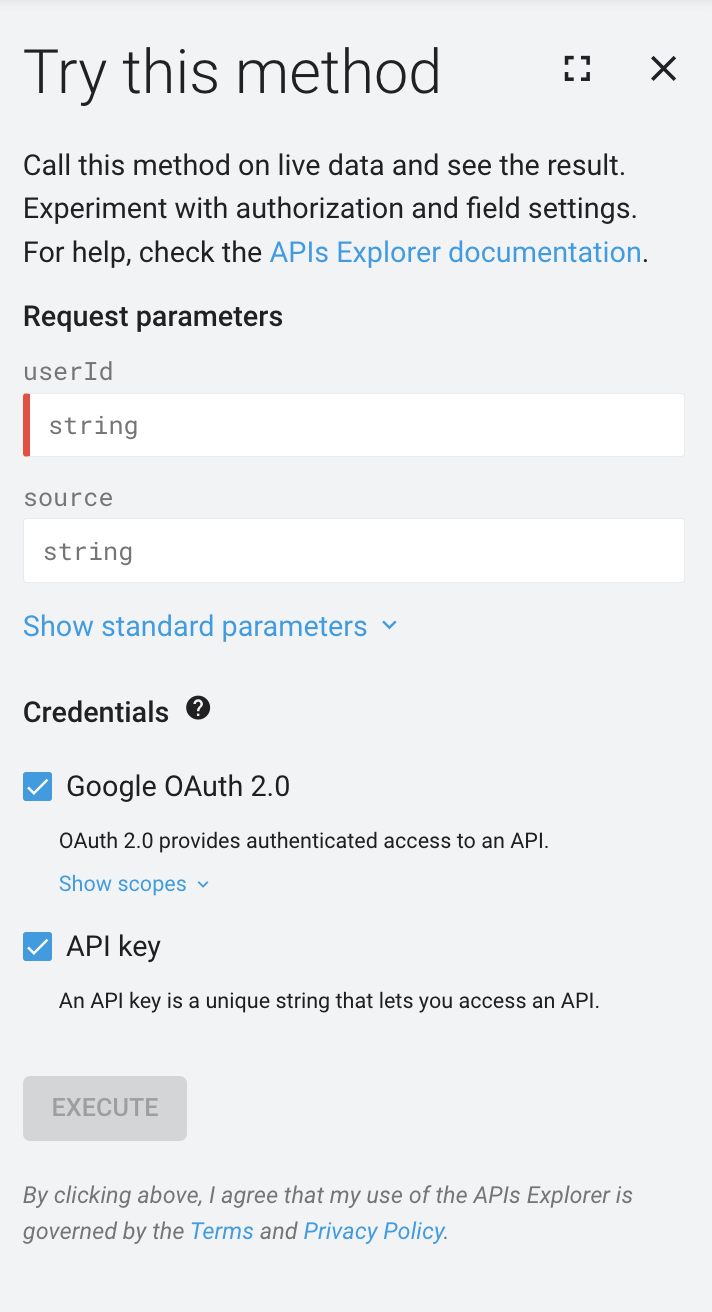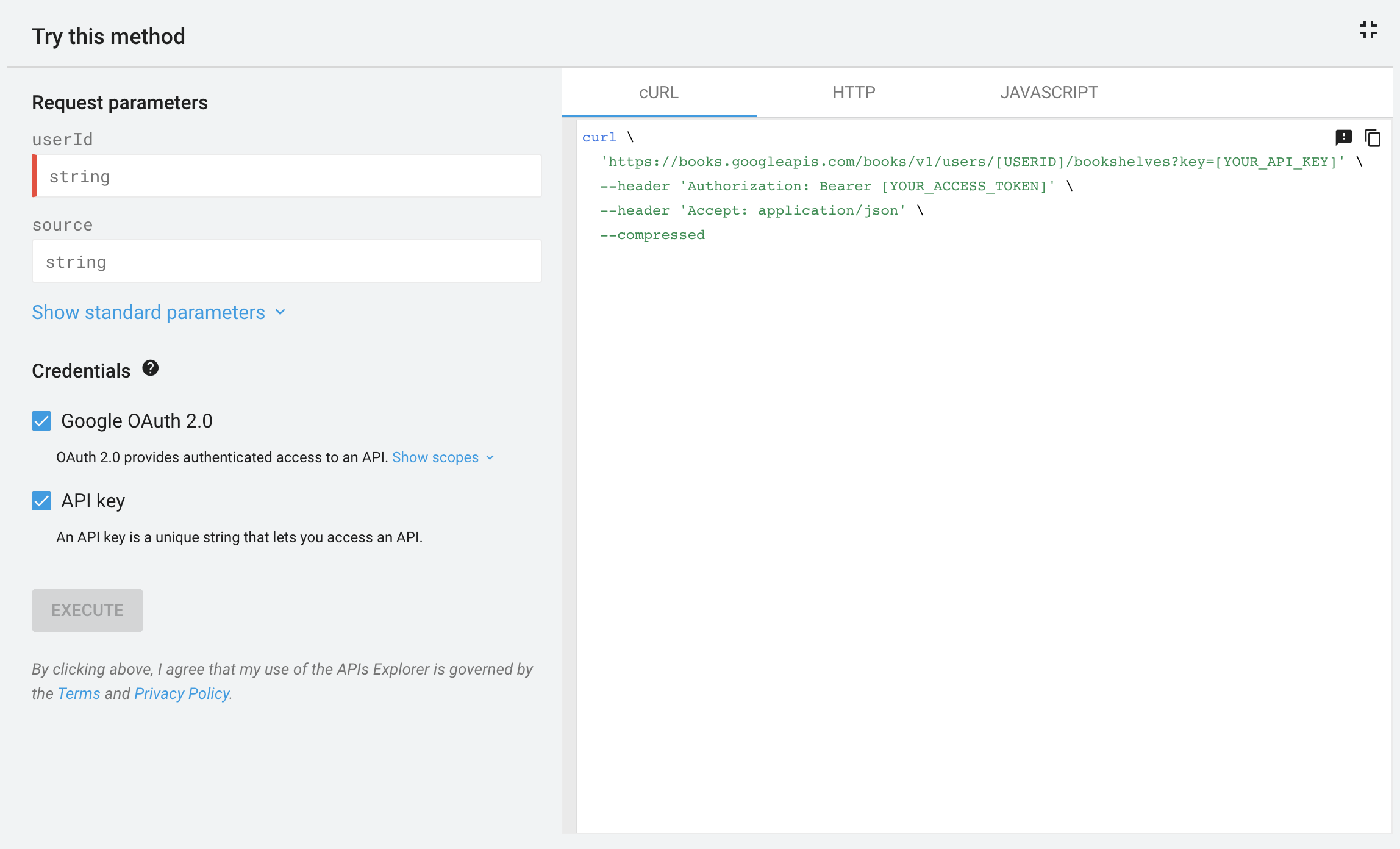Google APIs Explorer — это инструмент, доступный на большинстве страниц документации по методам REST API, который позволяет опробовать методы Google API без написания кода. Проводник API работает с реальными данными, поэтому будьте осторожны при использовании методов, которые создают, изменяют или удаляют данные.
Используйте каталог
Чтобы просмотреть список API Google, которые вы можете изучить, просмотрите каталог Google APIs Explorer . Этот список содержит ссылки на справочную документацию по поддерживаемым API. Выполните следующие шаги, чтобы изучить API:
- Откройте каталог проводника API Google .
- В поле поиска вверху введите название API, который вы хотите изучить.
- Щелкните имя API. Откроется справочная документация по API.
- Слева щелкните метод, который вы хотите использовать в навигации.
Справа найдите панель с надписью «Попробуйте этот метод». Подробнее о том, как использовать боковую панель обозревателя API и как расширить ее до полноэкранной панели обозревателя API, см. ниже.
Используйте боковую панель


По умолчанию обозреватель API отображается в правой части экрана в справочной документации по API для поддерживаемых методов.
Вы можете настраивать и взаимодействовать со следующими разделами на боковой панели APIs Explorer:
- Параметры запроса , если это требуется методом.
- Тело запроса , если это требуется методом.
- Credentials , чтобы протестировать метод с различными типами учетных данных и областями действия.
- Кнопка « Выполнить », чтобы запустить метод с указанными параметрами и настройками.
- Результат , отображаемый только после выполнения метода.
Используйте полноэкранную панель


В свернутой боковой панели обозревателя API можно щелкнуть Полноэкранный режим, чтобы развернуть обозреватель API. Полноэкранная панель отображает дополнительную панель, содержащую образцы кода, ответы application/json и необработанные ответы HTTP.
Аутентификация
Проводник API использует собственные учетные данные для выполнения запроса. Вы не можете использовать пользовательские учетные данные с проводником API.
Форматы данных
Обозреватель API поддерживает только JSON для ответов и полезных данных запросов. Даже если ваш API поддерживает другие форматы данных, эти форматы не работают в обозревателе API.
Следующие шаги
- Узнайте, как отобразить обозреватель API и выполнить метод .
- Узнайте, как протестировать метод, используя разные учетные данные и области действия .
- Узнайте, как выполнить пример кода APIs Explorer локально .
